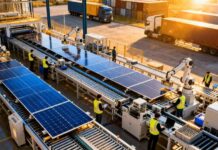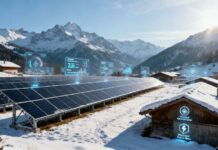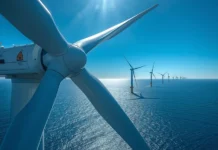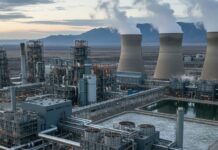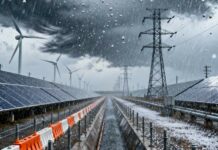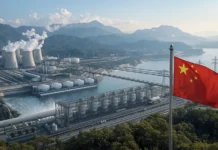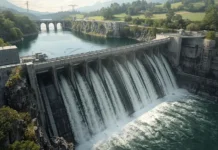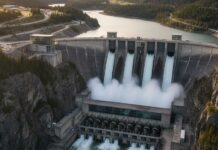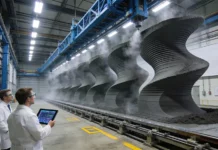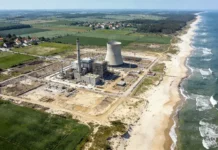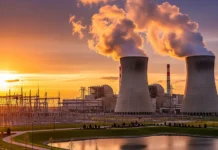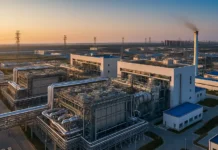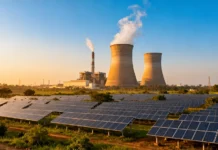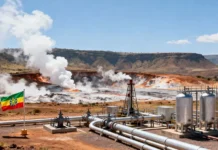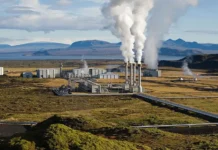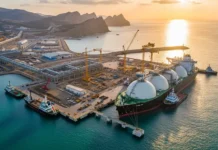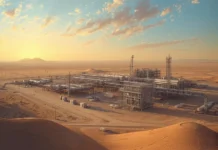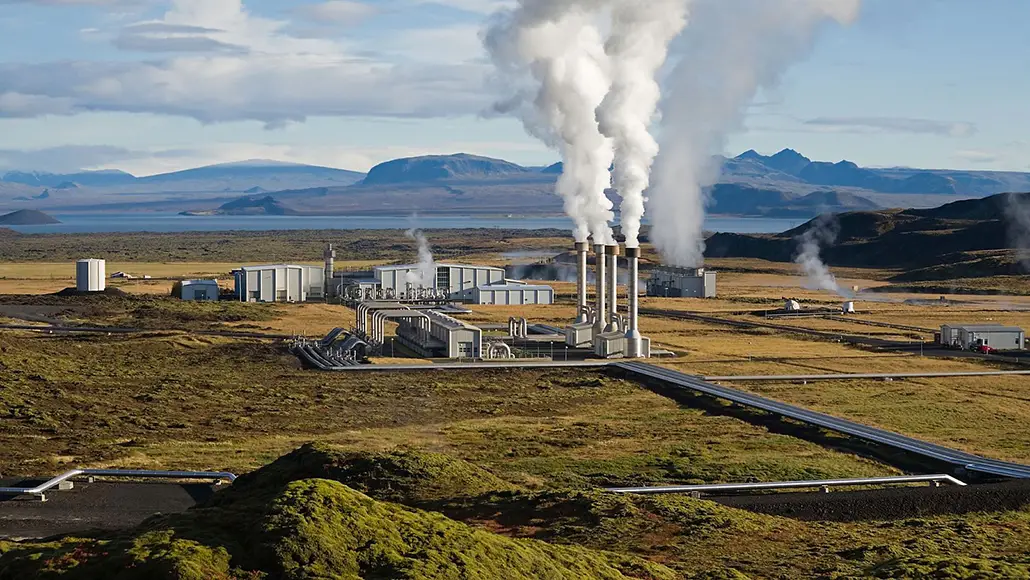Geothermal energy is moving quietly but steadily into the mainstream of global energy discussions. Once perceived as a niche form of renewable power tethered to volcanic landscapes, it is now being reconsidered as a scalable, dependable, and increasingly cost-competitive solution for baseload electricity and industrial heat. The current global transition toward diversified clean energy portfolios, intensified by decarbonization targets and energy security imperatives, has set the conditions for geothermal to rise. Recent advances, particularly in enhanced and advanced geothermal systems (EGS and AGS), are transforming its geographic and economic scope, while government strategies across regions are aligning to support investment in exploration and development. In 2025, the global geothermal sector stands at a turning point, balancing long-standing reliability with new frontiers of technological ambition.
Global Market Momentum
The geothermal energy market has expanded significantly over the past half decade. As of 2025, estimates suggest a global market size of roughly USD 9.4 billion, projected to exceed USD 16 billion by 2035, a compound annual growth rate of around 5.5 percent. This momentum stems from both sustained policy support and growing recognition of geothermal’s dual utility for electricity generation and direct heat use in industries such as agriculture and district heating.
Regionally, North America remains the frontrunner, holding the largest share due to its mature project pipeline and substantial public funding channels. The United States, in particular, is witnessing an 85 percent surge in geothermal investments, reaching nearly USD 2 billion in the first quarter of 2025 alone. Such capital inflows have been catalyzed by federal initiatives, technology pilots, and streamlined permitting across key states. North America’s estimated geothermal potential now exceeds 500 GW, far outpacing current installed capacity, which hovers near 4 GW.
Asia-Pacific also shows strong growth. China and India are advancing geothermal initiatives, leveraging their industrial expansion goals and decarbonization objectives. In India, the 2025 National Policy on Geothermal Energy marked a major step in nationwide clean energy diversification. With five sanctioned projects focusing on exploration and pilot operations, the country is creating an enabling environment for resource mapping and direct-use geothermal applications such as agricultural heating and aquaculture. Across Europe, nations such as Iceland, Türkiye, and Italy continue to maintain global leadership positions, providing both operational expertise and technical mentorship to emerging markets.
The Rise of New Geothermal Technologies
The most transformative element of geothermal’s current expansion lies in technological evolution. Traditional geothermal plants depended heavily on high-temperature resources at shallow depths, often restricting projects to tectonically active regions. Enhanced geothermal systems (EGS) and advanced closed-loop approaches are fundamentally changing that equation.
EGS allows energy extraction from hot dry rock formations by inducing permeability artificially. This opens the door to vast new regions previously deemed unsuitable for geothermal activity. Enhanced systems are now demonstrated at commercial scale, running at up to 90 percent capacity, an impressive figure considering the intermittency issues facing solar and wind projects. From a grid perspective, this high capacity factor gives geothermal energy strategic relevance as a stabilizing renewable source.
Meanwhile, ongoing research into super-hot rock drilling, capable of reaching temperatures above 374°C, promises output levels comparable to fossil-based power plants. The International Energy Agency projects that cost reduction trajectories could lower geothermal’s levelized cost of energy (LCOE) to around USD 50 per megawatt-hour by 2035—close to the U.S. Department of Energy’s own target. If achieved, this would make next-generation geothermal competitive with solar and wind in many markets while retaining its unique baseload stability.
The International Energy Agency estimates that by 2050, globally deployed next-generation geothermal could reach over 800 GW under favorable cost scenarios, contributing up to 15 percent of global electricity growth. This potential, combined with new industrial applications, such as process heating, makes geothermal an increasingly versatile pillar within decarbonized energy systems.
Policy Evolution and Investment Climate
Geothermal expansion depends on a synthesis of public policy design and private investment confidence. Across multiple regions, governments have updated their renewable portfolios to explicitly include geothermal as a critical route to decarbonization. In the United States, federal programs such as the Enhanced Geothermal Shot align funding, research, and interagency cooperation to lower exploration risks and shorten project timelines. Similar patterns are visible across the European Union, where feed-in tariffs and long-term power purchase agreements have become standard measures for geothermal power offtake.
According to recent international analyses, government planning agencies are increasingly integrating geothermal into nationally determined contributions (NDCs) under the Paris Agreement. This reflects a policy shift from experimental support to strategic incorporation, placing geothermal alongside solar and hydrogen in long-term energy transition frameworks. Countries like Kenya and Indonesia, long-standing leaders in geothermal generation, now serve as reference models for new entrants developing domestic resource policies. The current emphasis lies not only in exploration but also in de-risking investments through shared geological data and guarantee mechanisms.
The Climate Investment Funds’ allocation of USD 810 million across 15 countries further exemplifies coordinated global support. Of this, over USD 400 million flows to Asian geothermal investments, with substantial allocations also directed towards Africa and Latin America. This multi-regional financing approach is designed to build both physical and institutional capacity for geothermal growth in emerging economies.
For industry stakeholders, the picture is encouraging but measured. Capital expenditure per installed kilowatt remains high, often in the USD 5,000-6,000 range due to complex drilling and reservoir stimulation costs. Yet as oil and gas service providers pivot toward geothermal contracting, cost synergies are likely to emerge. This cross-sector collaboration, driven by technical similarities in subsurface engineering, is already contributing to accelerated learning and reduced project risk profiles.
Regional Perspectives
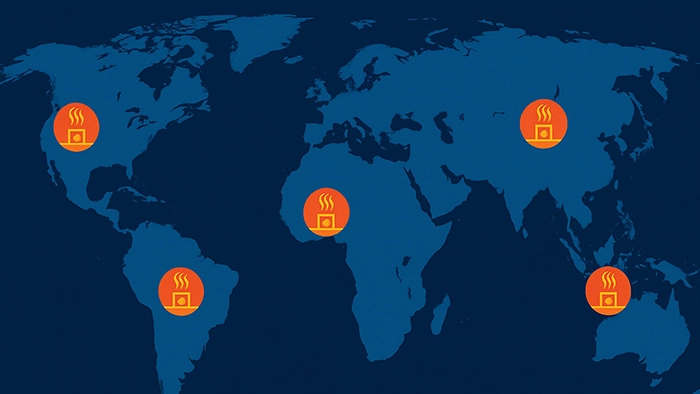
Geothermal’s trajectory varies significantly by geography, shaped by local policy, resource availability, and industrial needs.
In North America, large-scale project clusters are emerging in the western United States and Canada. Supportive regulations and enhanced funding for exploration activities have revitalized dormant leases, particularly across states like Nevada, Utah, and Alaska. Canada is leveraging public financing models and emerging EGS technologies to develop its frontier regions. Beyond electricity, there is rising attention to co-production opportunities, extracting lithium and other critical minerals from geothermal brines, a combination that strengthens project economics.
Asia-Pacific represents a rapidly diversifying market. China’s integration of geothermal into its long-term decarbonization plan highlights its intent to reduce coal reliance and advance district heating systems. India’s new national policy provides institutional clarity previously missing in its renewable energy portfolio, placing state-backed pilot programs at the center of market creation. Southeast Asian nations, particularly Indonesia and the Philippines, continue to expand their provincial geothermal plants, underscoring local energy sovereignty and rural electrification goals.
In Europe, geothermal continues its evolution beyond electricity into low-carbon heating and storage solutions. Iceland remains an exemplar of domestic energy independence built on geothermal reliability, while Türkiye and Germany are scaling mid-temperature systems for district and industrial use. European markets also display the most advanced integration of geothermal into carbon accounting systems, where heat utilization gains equal footing with power generation metrics.
Africa and Latin America are witnessing gradual but meaningful progress. Kenya sustains its regional leadership with ongoing field expansions, while Ethiopia and Djibouti are following with pilot-scale efforts. In Latin America, Chile and Mexico show consistent exploratory activity, backed by international financing and cross-border technical partnerships. Collectively, these regions represent the next-wave markets where risk-sharing frameworks and international collaboration will determine geothermal’s long-term momentum.
Integration with the Broader Energy Transition
Geothermal’s expanding role aligns with wider structural changes across the global energy system. As grids increasingly absorb variable sources like wind and solar, the need for stable and dispatchable clean power intensifies. Geothermal’s ability to deliver near-constant output comparable in reliability to fossil-based baseload generation renders it an ideal balancing resource. This reliability also positions geothermal as a bridge between renewable growth and infrastructural modernization, particularly for grids undergoing digitalization and energy storage integration.
From a strategic standpoint, geothermal also underscores the trend toward “multi-resource synergies.” Projects now frequently combine power generation with heat supply, mineral co-production, and even hydrogen generation. Such hybrid models enhance financial resilience by diversifying revenue streams and improving land-use efficiency. The emerging co-production of critical minerals like lithium from geothermal brines exemplifies this convergence, a development likely to attract further attention from policymakers aiming to align green energy and materials strategies.
At a societal level, geothermal offers long-term economic stability for local economies, particularly in rural areas near production sites. The consistent employment, infrastructure investment, and regional value creation associated with geothermal operations contrast with the shorter project cycles typical in solar or wind installations. In this sense, geothermal contributes not just to decarbonization but also to durable economic diversification.
The Cost and Challenge Equation
Despite its promise, geothermal still encounters real challenges. Drilling complexity, up-front financial burden, and exploration risk remain major deterrents in new markets. Additionally, operational concerns, such as potential seismicity in EGS projects or fluid management in older plants, require stringent oversight. Public acceptance hinges on transparent communication of these risks and clear frameworks for environmental assurance.
However, progress in materials science, drilling automation, and geospatial analytics is steadily lowering these barriers. The adaptation of oilfield technologies, directional drilling, fiber-optic sensing, and geological mapping is shortening development cycles and providing more precise predictions of productivity. As the learning curve flattens, both LCOE and payback periods continue to improve, reinforcing the technology’s bankability over the long term.
Conclusion
The story of geothermal energy in 2025 is one of steady acceleration rather than sudden disruption. Unlike some renewables that rely on rapid deployment cycles, geothermal’s progress hinges on patience, planning, and persistence. Yet the combination of emerging technology, diversified investment, and coordinated policy are now bringing it closer to mainstream relevance than ever before.
For professionals in energy development, geothermal represents both an opportunity and a challenge: the chance to participate in a resource that offers unparalleled reliability and the responsibility to navigate its complex geology and capital requirements. As the sector broadens technologically and geographically, it quietly redefines what “renewable baseload” can mean in practice. Over the next decade, that redefinition may well make geothermal one of the most stable pillars of the clean energy transition, an energy source drawn from the deep earth that supports a more balanced and enduring global power system.




